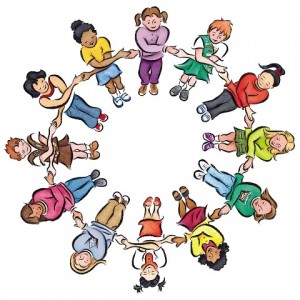 Before moving to an international school in Bangkok, the three main social groups that I belonged to were: the foreign teachers, the Thai teachers, and the students themselves. The belief and values that each group shares, their common characteristics, were influenced by a strict school structure and a ‘hidden curriculum.’ Just as suggested in the introduction to Gee’s (1996) book, educators need to engage in “debates over ideology, discourse and the social” (p.viii). Below I will make an attempt at bridging the gap between literacy and critical pedagogy, looking closer at the concept of empowerment and the ‘hidden curriculum.’
Before moving to an international school in Bangkok, the three main social groups that I belonged to were: the foreign teachers, the Thai teachers, and the students themselves. The belief and values that each group shares, their common characteristics, were influenced by a strict school structure and a ‘hidden curriculum.’ Just as suggested in the introduction to Gee’s (1996) book, educators need to engage in “debates over ideology, discourse and the social” (p.viii). Below I will make an attempt at bridging the gap between literacy and critical pedagogy, looking closer at the concept of empowerment and the ‘hidden curriculum.’
Empowering means teaching students critical skills that give them the necessary tools to question the dominant culture, and to transform the social order they live in, rather than just be part of it (McLaren, 2003). But, working in a highly structured organisation, where decisions were often taken by managers and consultants that know little of the realities faced by the teachers (both foreign and Thai) and students, the class teacher was left with little place for negotiation. Both teachers and students had to follow a strict, repetitive morning routine, they had to use books chosen by the management without even consulting the teachers, and had to administer standardized tests that required students to memorize rather than think critically. Thus, in such a controlled school environment, empowering students is almost impossible. Challenging the dominant culture of the school and trying to empower the students in changing oppressive social practices was unheard of.
According to McLaren (2003), the ‘hidden curriculum’ is “the unintended outcomes of the schooling process” (p.86). The hidden curriculum also includes the teaching and learning styles advocated by the classroom teacher, by the instructional environment, the schooling structure decided by the government, the teacher’s expectations, and the testing and grading policy of the school.
Two of the social groups that I belonged to, i.e. the foreign and Thai teachers, should have been given the power to facilitate the students’ empowerment. But as the school dictated the teaching and learning styles of the students, controlled the instructional environment, and the testing and grading policy of the school, empowerment did not happen. Thus, through the hidden curriculum, the students learn to comply with practices related to authority, behaviour and morality supported by the dominant class (McLaren, 2003).
References:
- Gee, J.P. (1996). Social linguistics and literacies: Ideology and discourse (2nd ed.). London: Falmer Press.
- McLaren, P. (2003). Critical pedagogy: A Look at the Major Concepts. In A. Darder, M. Baltodano & R.D. Torres (Eds.), The Critical Pedagogy Reader. New York: RoutledgeFalmer.
Image source

